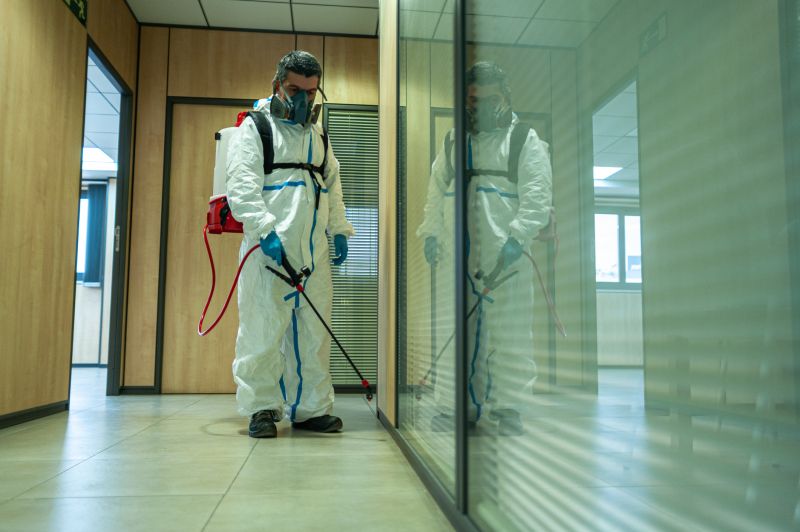Popular RV Fumigation Products For Easy Pest Control
Discover reliable fumigation solutions that provide quick and efficient pest eradication for your RV.
 When it comes to maintaining a clean and pest-free environment inside an RV, fumigation products play a crucial role. These products are designed to target and eliminate common pests such as insects, rodents, and other unwanted critters that can find their way into confined spaces. Proper use of fumigation products can help ensure a healthier, more comfortable living space during travel or extended stays. Selecting the right product involves understanding various formulations, application methods, and safety considerations to achieve effective results without risking damage to the RV or its occupants.
When it comes to maintaining a clean and pest-free environment inside an RV, fumigation products play a crucial role. These products are designed to target and eliminate common pests such as insects, rodents, and other unwanted critters that can find their way into confined spaces. Proper use of fumigation products can help ensure a healthier, more comfortable living space during travel or extended stays. Selecting the right product involves understanding various formulations, application methods, and safety considerations to achieve effective results without risking damage to the RV or its occupants.
Top Overall Option
Multi-Purpose Fumigation Aerosol
A versatile aerosol spray designed for quick and effective treatment of various pests within RVs. It offers easy application, broad coverage, and is suitable for spot treatments and smaller areas. Its formulation aims to minimize residual odor while providing reliable pest control, making it a practical choice for routine maintenance and emergency use.
Types of Products For Rv Fumigations
Aerosol Sprays
Convenient for targeted pest control, aerosol sprays are easy to apply in specific areas or cracks where pests hide.
Foggers / Space Treatments
Designed to treat larger enclosed spaces, foggers release a vapor that penetrates into hidden corners and crevices.
Residual Sprays
Applied to surfaces to provide ongoing protection against pests over time, residual sprays are useful for long-term prevention.
Vaporized Treatments
These products release a vapor that can cover extensive areas, ideal for comprehensive fumigation sessions.
Natural Pest Repellents
Non-chemical options that use natural ingredients to deter pests without the use of synthetic chemicals.
Bait Stations
Placed strategically, bait stations attract pests and trap or eliminate them over time, complementing fumigation efforts.
Insect Growth Regulators
Products that interfere with pest development cycles, reducing future infestations when used properly.
Rodent Baits
Specifically formulated to attract and eliminate rodents, often used alongside other pest control methods.
Trap Devices
Physical traps that capture pests for removal, often used in conjunction with chemical treatments.
Disinfectant Sprays
Help eliminate bacteria and odors that may attract pests, maintaining a hygienic environment.
Popular Choices
A widely used aerosol option suitable for quick pest elimination in confined spaces like RVs.
Effective for treating entire RV interiors in a single session, suitable for severe infestations.
Provides ongoing protection when applied to common pest entry points and hiding spots.
Popular among those seeking non-chemical options, often containing citronella or eucalyptus oils.
Used to disrupt pest development cycles, reducing future pest populations.
Trusted for effective rodent control in RV storage and living areas.
Silent, chemical-free traps that attract and capture pests using light or scent.
Help eliminate persistent odors that may attract pests, improving overall hygiene.
An alternative to chemical baits, using attractants to lure pests into traps.
Popular for spot treatments in cracks, corners, and small infestations.
Fumigation products for RVs come in diverse forms including aerosols, foggers, vaporized treatments, and residual sprays. Each type offers different advantages depending on the pest problem and the size of the space. For example, aerosol sprays are convenient for spot treatments, while foggers can treat larger areas more comprehensively. It's important to follow manufacturer instructions carefully to ensure proper ventilation and safety during and after application. Regular maintenance and inspection can also help prevent infestations before they become severe.
Additionally, some fumigation solutions are formulated to address specific pests such as bed bugs, ants, or roaches, providing targeted options for common issues faced by RV owners. Proper storage and handling are essential to avoid accidental exposure or misuse. When choosing a fumigation product, consider the compatibility with your RV's interior materials, ease of use, and the duration of effectiveness. Consulting with pest control professionals or reading product reviews can provide further insights into which options might best suit your needs. Overall, a well-chosen fumigation product can be a valuable part of your RV maintenance routine, helping to keep your travel space pest-free and comfortable.
Key Buying Considerations
- Identify the specific pests you need to target to select the most appropriate product.
- Consider the size of your RV to determine the coverage area needed for effective treatment.
- Check the application method – aerosol, fogger, residual spray, or vaporized treatment – based on your preference and situation.
- Review safety instructions and ensure proper ventilation during and after application.
- Assess whether the product is suitable for use around pets and children if applicable.
- Look for products with clear instructions on usage, storage, and disposal.
- Evaluate the longevity or residual effect to determine if ongoing protection is necessary.
- Consider ease of use and whether the product requires professional application or can be used DIY.
- Check for any specific material compatibility to prevent damage to interior surfaces or furnishings.
- Read customer reviews and ratings to gauge effectiveness and user satisfaction.
- Be aware of any potential odors or residues that might affect your comfort inside the RV.
- Determine if the product offers a quick-acting solution or a longer-term pest management plan.
- Ensure the product complies with safety and regulatory standards relevant to your location.
- Consider storage requirements and shelf life for future use.
This content contains affiliate links. We may earn a commission if you make a purchase through these links, at no additional cost to you.
